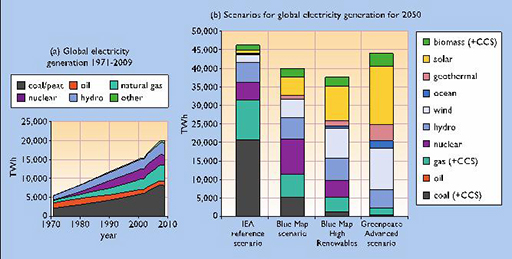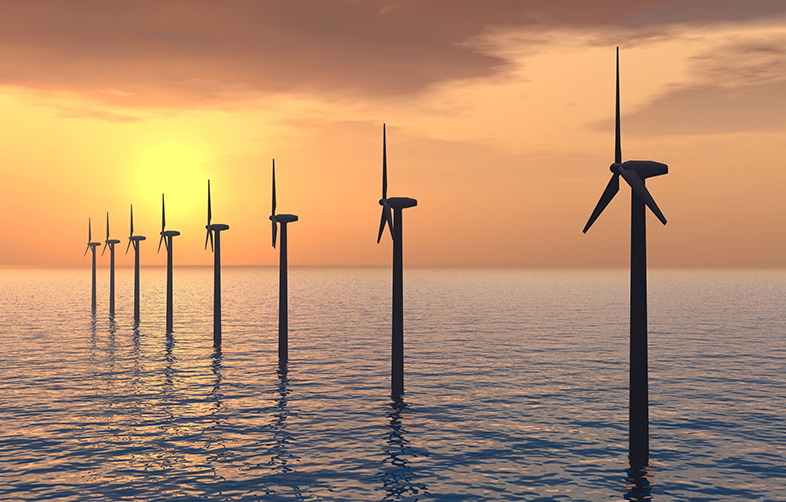8.2 Comparing International Energy Agency and Greenpeace scenarios
Energy scenarios are published regularly by the International Energy Agency in its Energy Technology Perspectives Reports, which outline the Agency’s view of the future prospects for various energy technologies. In the 2010 report (IEA, 2010) it produced a ‘Blue Map’ scenario to illustrate how world CO2 emissions could be halved by 2050, compared to current levels, in order to enable atmospheric concentrations to be kept below 450 ppm and global temperature rises to below 2 ˚C – a threshold that many experts believe should be an upper limit. In the IEA’s Blue Map scenario, world primary energy use continues to grow, and renewable energy by 2050 contributes almost 40% of primary energy supply (see Figure 7).
The IEA has also published several variants on its 2010 Blue Map scenario, including a ‘Blue High Renewables scenario’, in which the renewable share of world electricity rises from 48% to 75% by 2050. In Figure 7 this is shown along with the electricity projection for 2050 from Greenpeace’s ‘Advanced Energy (r) Evolution scenario’. Both the IEA and Greenpeace expect a doubling of world electricity demand by 2050. The IEA envisages ‘spread effort’, including some fossil and nuclear fuels but with plenty of scope for the expansion of renewables. Greenpeace sees even more room for expansion of biomass, wind, solar and geothermal energy (but not hydro), though it rules out nuclear power.
The IEA’s 2014 Energy Technology Perspectives report was more optimistic about the future prospects for renewable energy, and in particular solar power. In included a ‘2DS’ Energy scenario for the world energy system to 2050, which’…describes an energy system consistent with an emissions trajectory that recent climate science research indicates would give at least a 50% chance of limiting average global temperature increase to 2oC’ (IEA, 2014). And as mentioned in Week 3 Photovoltaics, it also produced a ‘2DS High Renewables’ (2DS hiRen) scenario, a variant which ‘illustrates an expanded role of renewables in the power sector, based on a decreased or delayed deployment of nuclear technologies and CCS’.

As Figure 7 illustrates, in the 40 years between 1970 and 2010, world electricity generation more than tripled. In the next 40 years it seems likely to double in all the scenarios shown. The task of building and installing new clean electricity generation capacity, and the associated networks, will be a major world challenge in coming decades, and these scenarios suggest that renewables are likely to play a major role.
